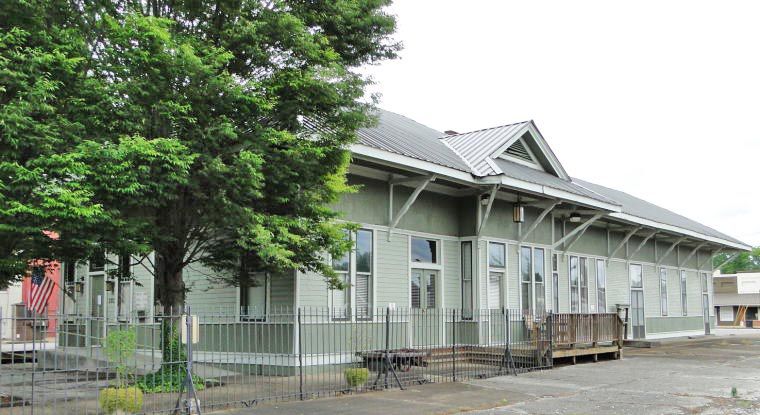(Column) Immediately after Jesus’ ascension
Published 5:38 pm Thursday, May 1, 2025

- Mark W. Durm is a Professor Emeritus of Athens State University.
IMMEDIATELY AFTER JESUS’ ASCENSION
(All scripture quoted is from the NIV Study Bible by Zondervan, 2020 edition)
There are three verses in the New Testament that are very interesting and are loaded with information. These verses occur immediately after Jesus’ ascension and are in the first chapter of Acts of the Apostles, verses 12, 13 and 14.
THE SABBATH DAY’S WALK
Verse 12 reads “Then the Apostles returned to Jerusalem from the hill called the Mount of Olives, a Sabbath day’s walk from the city.” This is the only reference in the entire Bible to the “Sabbath day’s walk”. How long is the Sabbath day’s walk? 2,000 cubits is considered to be the length of the walk and devout Jews honored it. Notice Jesus’ disciples were honoring it. Where in the Bible is this commandment given and where is it surmised to be the length of 2,000 cubits? Three sets of scripture in the Old Testament provide this information. They are Exodus 16:29; Numbers 35:4-5; and, Joshua 3:4.
Exodus chapter 16 concerns where God provides manna for the hungry Israelites who are coming out of Egypt and were camped in the Desert of Sin. Verse 29 reads, “Bear in mind that the Lord has given you the Sabbath….everyone is to stay where they are on the seventh day; no one is to go out.” (see also Exodus 20:10; Exodus 34:21; and Exodus 35:3) Numbers, chapter 35 verses 1 through 5 are in the context of “Towns for the Levites”. Verses 4 and 5 read: “4The pasturelands around the towns that you give the Levites will extend a thousand cubits from the town wall. 5Outside the town, measure two thousand cubits on the east side, two thousand on the south side, two thousand on the west and two thousand on the north, with the town in the center. They will have this area as pastureland for the towns.” If the Lord said the Levites could walk 2,000 cubits to help a goat or cow on the Sabbath, the other Israelites reasoned it must be good enough for them.
In Joshua chapter 3, in the context of “Crossing the Jordan”, the Israelites camped three days before crossing the Jordan. Verses 3 and 4 read: “3giving orders to the people: ‘When you see the Ark of the Covenant of the LORD your God, and the Levitical priests carrying it, you are to move out from your positions and follow it. 4Then you will know which way to go, since you have never been this way before. But keep a distance of about two thousand cubits between you and the Ark; do not go near it.’” Therefore, the Israelites were supposed to “keep a distance of about two thousand cubits” between them and God’s habitat, the Ark. If the Ark was ever going to be carried among the Israelites on a Sabbath, they may have had to walk at two thousand cubits away from it. Therefore, the reasoning among the Jewish people was that they could not walk more than 2,000 cubits on the Sabbath.
HOW LONG IS A CUBIT?
Good question. Originally it was defined as the length from the elbow to the tip of the outstretched middle finger. But since there was and is variability among humans, it was later decided to be between, using inches as the standard, 18 to 22 inches. Therefore, if I did my math right, at 18 inches per cubit, 2,000 cubits is .57 of a mile and at 22 inches it is .69 of a mile.
ALONG WITH WOMEN AND MARY MAGDELENE
When the 11 Apostles arrived at Jerusalem after the Sabbath’s walk, they went to the upper room where they had been staying during Passover (verse 13). Verse 14 consists of 21 words and creates a multitude of questions. It reads: “They [the 11 Apostles’] all joined together constantly in prayer, along with the women and Mary the mother of Jesus, and with His brothers.” Who were “the Women”? The Apostles’ wives (the Bible tells us Peter was married), or the other women who were present at the tomb; “Mary Magdalene and the other Mary” of Matthew; or “Mary Magdalene, Mary the mother of James and Salome” of Mark; or “Mary Magdalene, Joanna, Mary the mother of James and the others with them…” of Luke.
JESUS AND HIS SIX SIBLINGS
The Bible tells us Jesus was one of at least seven siblings if not more. Jesus had four brothers whose names were James, Joseph, Simon and Judas (Matthew 13:55; see also Mark 6:3). Both Matthew (Matthew 13:56) and Mark (Mark 6:3) relates he had “sisters” (plural), Matthew reads, “….all his sisters….” which could mean more than two. Thus, with five boys and at least two girls Jesus was one of seven siblings.
I firmly believe Jesus’ family was very active in his ministry, notwithstanding Matthew 12:46-50; or Mark 3:20-35; or Luke 8:19-21.
The Bible tells us His mother was with Him at his first miracle in the Gospel of John, changing the water into wine, and this occurs in chapter 2. The last sentence in chapter 2 reads: “After this [water into wine] He went down to Capernaum with His mother and brothers and His disciples. There they stayed for a few days”. Thus, His brothers were with Him at the beginning of His ministry.
Five chapters later (chapter 7) in the Gospel of John we find his brothers encouraging Jesus to do his “works” more openly in Jerusalem. The Jewish festival of Tabernacles was about to start there. Chapter 7:1-4 reads: “1After this, Jesus went around in Galilee. He did not want to go about in Judea because the Jewish leaders there were looking for a way to kill him. 2But when the Jewish Festival of Tabernacles was near, 3Jesus’ brothers said to him, “Leave Galilee and go to Judea, so that your disciples there may see the works you do. 4No one who wants to become a public figure acts in secret. Since you are doing these things, show yourself to the world.”
Thus, were not His brothers trying to encourage Him? I will admit verse 5 is difficult to understand. It reads: “For even His own brothers did not believe in Him”. I do believe, however, His brothers were encouraging Him in His ministry and not trying to be sarcastic to Him as some people believe.
Therefore, His brothers were with Him after the Cana wedding. They were encouraging Him in the middle of His ministry to show His works more openly, and as we already know, they were in the upper room praying after His ascension. Beginning, middle and end of Jesus’ ministry!
Moreover, there is one more strong piece of evidence of Jesus’ family being involved, and it occurs a little later in the history of Christianity. It was Jesus’ brother, James! This can be surmised from different scriptures in the New Testament. For instance, Paul writes in Galatians chapter 1, verses 18 and 19: “…I went up to Jerusalem to get acquainted with Cephas (Peter) and stayed with him fifteen days. I saw none of the other Apostles – only James, the Lord’s brother.” Then 14 verses later Paul goes to Jerusalem again and he writes in chapter 2 verse 9: “James, Cephas and John, those esteemed as pillars, gave me and Barnabas the right hand of Fellowship when they recognized the grace given to me ….”
Later in chapter 2, Paul opposes Cephas (Peter). Verses 11 through 13 read: 11When Cephas came to Antioch, I opposed him to his face, because he stood condemned. 12For before certain men came from James, he used to eat with the Gentiles. But when they arrived, he began to draw back and separate himself from the Gentiles because he was afraid of those who belonged to the circumcision group. 13The other Jews joined him in his hypocrisy, so that by their hypocrisy even Barnabas was led astray.
Notice Peter changes his behavior when “certain men came from James”. James is in charge of the church in Jerusalem, not Peter.
In chapter 21 of Acts, Paul makes another trip to Jerusalem. Verses 17 and 18 read: “When we arrived at Jerusalem, the brothers and sisters received us warmly. The next day Paul and the rest of us went to see James, and all the elders were present.”
Further information can be provided by stepping outside the Bible and quoting Eusebius who wrote, “The Church History”. Eusebius was born around 260 A.D. and died 339 A.D. and the ten books of his “Church History” are considered to be the primary source for earliest Christianity. He wrote that James became the first bishop of Jerusalem – and guess who was the second bishop after James died? It was Symeon, son of Clopas who is mentioned in John 19:25. Symeon was Jesus’ first cousin. (source, “Eusebius – The Church History” Paul L. Maier translation)
In conclusion, 3 verses which offer many facts which creates multiple questions – good Bible study!
Mark W. Durm is a Professor Emeritus of Athens State University.





